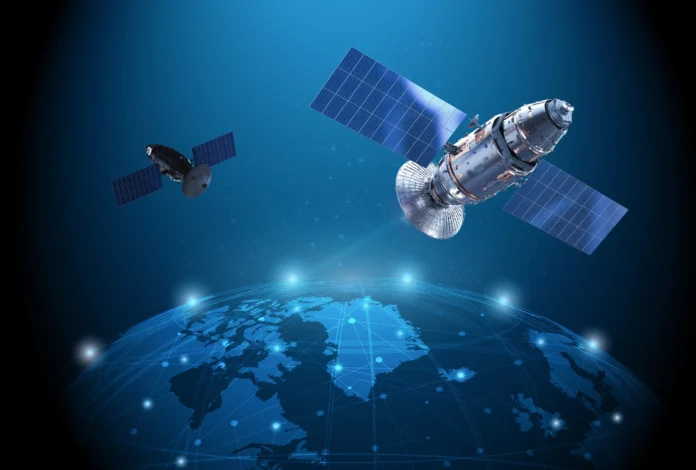A research team at Julius-Maximilians-Universität Würzburg (JMU) has successfully tested an AI-based attitude controller for satellites in direct orbit, which is a major step towards autonomous space systems. The test was conducted using the InnoCube, a 3U nanosatellite.
The JMU-created AI agent performed a complete attitude manoeuvre in orbit while solely controlled by artificial intelligence on October 30, 2025, between 11:40 and 11:49 a.m. CET. Using response wheels, the AI adjusted the satellite’s initial attitude to a preset goal attitude. The AI then had several more chances to show off its abilities. It successfully and safely guided the satellite in the right direction during subsequent testing.
The LeLaR Project
The In-Orbit Demonstrator for Learning Attitude Control project focuses on creating the next generation of autonomous systems for attitude control. Its primary objective was to create, train, and evaluate an AI-based attitude controller for the InnoCube nanosatellite during its orbit.
Attitude controllers help stabilise satellites in orbit and prevent them from falling. They are also used to guide the spacecraft in the proper course.For instance, it can be used to position cameras, sensors, or antennas toward a particular target.
The Würzburg controller was not constructed using traditional, fixed methods, which makes this study unique. Instead, the researchers employed deep reinforcement learning (DRL), a branch of machine learning in which a neural network automatically determines the optimal course of action in a simulated environment.
Fast and adaptable
The primary benefits of the DRL approach over classical control development are its speed and flexibility. Engineers may need to manually modify the settings of conventional attitude controllers for months or even years.
The DRL method automates this process. Furthermore, it offers the potential to create controllers that automatically adapt to differences between anticipated and actual conditions, eliminating the need for time-consuming manual recalibration.
Bridging the gap between Sim2Real
Before being deployed, the AI controller was trained on Earth in a high-fidelity simulation and then uploaded to the satellite’s flight model in orbit. One of the largest challenges was bridging the so-called Sim2Real gap, which is the requirement that a controller trained in simulation be just as functional on the real satellite in space.
“A truly decisive success,” emphasises Djebko of JMU. He says, “We have accomplished the first tangible evidence in the world that a satellite attitude controller trained with Deep Reinforcement Learning can function effectively in orbit.”
According to Baumann, “this successful test represents a significant advancement in the development of future satellite control systems.” It shows that AI can perform precise, autonomous movements in real-world situations as well as in simulations.
Acceptance and trust in AI for space applications
By successfully demonstrating an AI-based controller in orbit, the Würzburg team has demonstrated that artificial intelligence can be implemented with reliability in safety-critical space missions.
According to Puppe, “this will significantly increase the acceptance of AI methods in aeronautics and space research,” underscoring the simulation model’s vital role.
A crucial first step towards future autonomous missions is boosting trust in such technologies. For instance, missions in deep space or between planets, where human assistance is not feasible due to communication delays or long distances. Therefore, the AI-based approach might end up being crucial to the survival of spacecraft.
A significant development in space autonomy
Through this experiment, the Würzburg team has reached a significant milestone in the LeLaR project. Erik Dilger states, This achievement encourages us to apply the technology to new scenarios. The InnoCube satellite, developed in partnership with Technische Universität Berlin (TU Berlin), was used for the test. InnoCube is a platform for advanced space technologies that enables scientists to test new concepts in orbit.
One such innovation is the wireless satellite bus SKITH (Skip The Harness), which replaces traditional cable with wireless data transmission.This approach not only reduces weight but also minimizes potential points of failure.
Prospects: Space independence’s next stage
Due to this successful in-orbit test, the University of Würzburg is now acknowledged as a pioneer in AI-driven space systems. The demonstrated AI-based controller is a crucial part of future deep-space exploration. The LeLaR research findings may enable the faster and more economical development of new, advanced AI-based controllers for a range of satellite platforms.
The next goal is to build on this head start, Djebko says.
It’s a major step towards full autonomy in space, Montenegro continues. A new class of intelligent, adaptive, and self-learning satellite control systems is just getting started.
